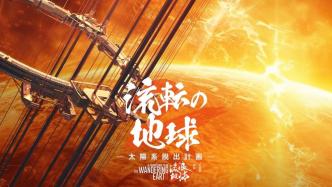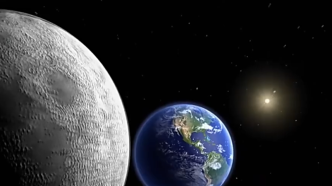

Over the years, I have been making sci-fi movies, and I really feel that the development and progress of the country has provided a strong support for the rise of sci-fi literature and art. On the one hand, economic development has provided a large enough cultural consumption market, and our market size has ranked among the top in the world, bringing rare conditions and opportunities for the science fiction industry. On the other hand, scientific and technological progress provides a realistic basis for the spread and acceptance of science fiction literature and art. For example, when the audience sees Chinese astronauts wearing space suits and walking out of the cabin on the space station on the big screen, they will naturally be convinced and not feel disobedient. The real world and the video world are necessarily connected. Only a strong country can support a strong science fiction industry. This has been proved by the history of literature, art and film.
As far as film creation is concerned, Chinese films have achieved breakthroughs in many aspects. For example, thanks to the powerful manufacturing industry, especially the application of 3D printing and CNC machine tools, the precision of the special props we made has reached product-level standards, creating a realistic picture texture. In this respect, we have reached the advanced level in the world. In addition, at the level of film visual effects, we have also achieved a qualitative leap. Conventional production problems such as vast space scenes and scenes of landslides have been well solved, and the most difficult biological visual effects have also made remarkable progress. For example, in "Lonely Walking on the Moon", the kangaroo's hair, muscles, bones and expressions have reached the level of "real". What is particularly valuable is that these visual effects are all independently completed by the Chinese team, realizing localization.
Indeed, props and visual effects are only technical aspects and belong to "details", but movies are composed of countless details. Especially for sci-fi movies, the biggest difficulty is to make the imaginary world seem real and believable, so that the audience can be drawn in to listen to your story. This requires extremely rich and realistic detail support. Everything as small as a cup or a chair, as large as a city street scene or the prehistoric universe, must be authentic and credible. For example, we conducted an audience survey after the first part of "The Wandering Earth" was released. Some viewers asked: How can underground cities solve the drainage problem? Will the absence of sunlight affect human life? Some viewers have sharp eyesight, and they can see in a shot that the background of the characters cannot change with the distance of the shot, pointing out that the scene is not realistic enough. The audience also found that the corners of the white walls were too clean, not old-fashioned, and lacked fireworks and life quality... After seeing these feedbacks, I really feel that the audience is too knowledgeable. These seemingly "picky" opinions are actually forging the film The golden words of continuous improvement in creation: A good movie must be polished through the scrutiny and modification of countless details.
In order to make the film's world view setting more scientific and the details more realistic, we invited scientists from multiple institutes of the Chinese Academy of Sciences to participate in joint research when filming the sequel of this film. For example, there is an assumption in the movie that "the earth stops rotating". In this case, our time and calendar will change. Through calculations, scientists pointed out that in this case a day is 60 hours, so the time displayed by the clock may be 35:20... In the early conception process, we spent a lot of time and energy on the movie world view in an encyclopedia way Setting, divided into two parts, social science and natural science, writing entries according to library taxonomy, including geographical environment, astronomical calendar, occupational composition, living habits, etc., covering all aspects of human life and space exploration, with more than 100,000 entries Character.
The successful release of the first part of "The Wandering Earth" inspired the whole team's sense of honor and creative ambition. This time, the team benchmarked against the top international production standards in production. This high standard can be achieved in a single scene, but if it is extended to the whole film, including scenes, characters, plots, visual effects and other aspects, the amount of work and production difficulty will increase exponentially. In addition, we also encountered new problems, that is, after the details and plots are enriched, the information density of the movie will be greatly increased, which will easily cause "information overload", which means that the audience will feel dazzled or even sleepy. This requires us to simplify the complexity and adjust the rhythm so that the audience can fully integrate and relax.
After these years of film creation, I have a deep understanding: we need imagination, and we need specific methods to transform imagination into works, that is, we need to establish a more powerful film industry system that suits our national conditions—not only equipment and Technology, but also processes and standards. With a complete film industry system, many production links do not need to repeat labor and repeated exploration. It is easier for filmmakers to create various types of excellent works based on previous experience, and the production level and production efficiency will be more guaranteed. Over the years, we have been doing a job, which is to record and research the film industry process and art management experience in the process of creation, hoping to provide experience for the film creation of latecomers. I believe that, one after another, filmmakers in the future will be better than blue, and Chinese films will definitely get better and better.
(The author is a film director)


